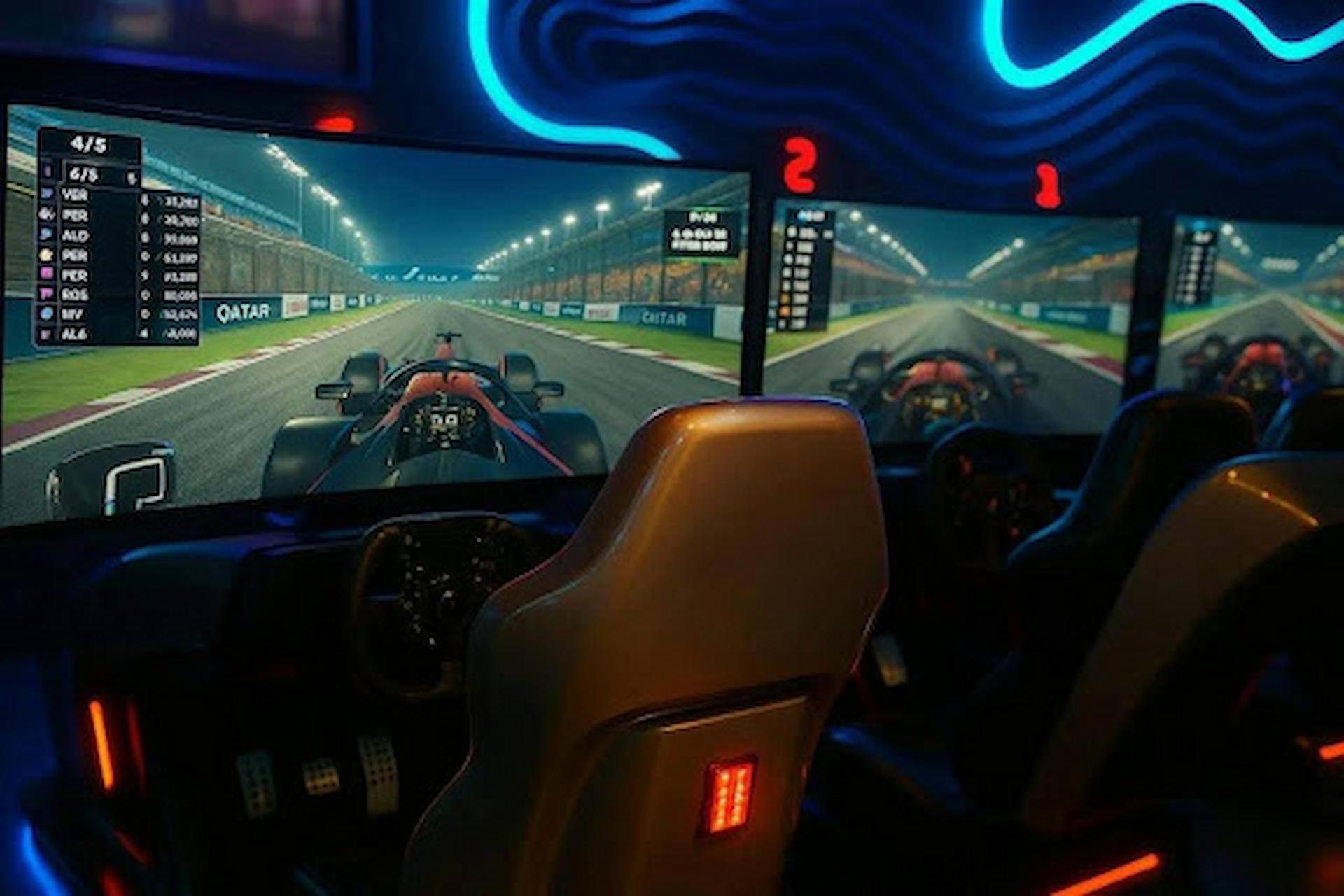
SimRacing has evolved from a niche hobby into a global phenomenon, attracting both casual gamers and professional drivers. With cutting-edge technology, realistic physics, and a passionate community, SimRacing offers an immersive motorsport experience from the comfort of home. Discover what’s fueling this surge in popularity and why SimRacer enthusiasts can’t get enough of virtual racing.
SimRacing, once a hidden gem among hardcore gamers, has exploded into mainstream culture. Today, the world of virtual racing is more vibrant than ever. Whether you’re a weekend gamer or an aspiring professional driver, the thrill of being a SimRacer offers an unmatched blend of realism and adrenaline. But what exactly is driving this rapid growth? Let’s explore the key factors that are steering millions towards digital racetracks.
What is SimRacing?
SimRacing, short for Simulation Racing, is a genre of racing games designed to replicate real-world motorsport dynamics. Unlike arcade racers, SimRacing focuses on precision. The games use accurate physics, realistic car handling, and authentic tracks to give players an immersive racing experience. Whether through a steering wheel setup or advanced simulators, SimRacing is as close as you can get to real racing—without leaving your living room.
The Rise of SimRacer Culture
The SimRacer community has grown exponentially, thanks to advances in gaming technology. High-quality graphics, VR integration, and force-feedback steering wheels have elevated the experience. For many, SimRacing isn’t just a hobby—it’s a passion. Online forums, social media groups, and eSports competitions have created a vibrant culture where SimRacers share tips, compete, and push the boundaries of virtual motorsport.
Additionally, real-world racing drivers have started using SimRacing as a training tool. This crossover has blurred the lines between virtual and physical racing, lending SimRacing a level of credibility it previously lacked.
Accessibility and Affordability
One of the biggest attractions of SimRacing is accessibility. In the past, motorsport was an expensive and exclusive field. But with SimRacing, anyone with a decent gaming setup can experience the thrill of racing. Entry-level equipment like steering wheels and pedals is now more affordable, and even professional-grade simulators are within reach for serious enthusiasts.
Moreover, SimRacing platforms like iRacing, Assetto Corsa, and Gran Turismo offer various subscription models and free content, making it easier for newcomers to get started. This democratisation of motorsport is a key reason behind SimRacing’s booming popularity.
The Technological Leap: VR and Motion Simulators
Technological innovation is at the heart of SimRacing’s rise. Virtual Reality (VR) has taken immersion to the next level. A VR headset allows drivers to feel like they’re actually inside the car, enhancing spatial awareness and realism. Motion simulators add another layer, replicating the physical sensations of acceleration, braking, and cornering.
These advancements attract not only gamers but also professional teams who use simulators for driver training and vehicle testing. The realism is so precise that some SimRacing platforms are now considered official training grounds for motorsport organisations.
A New Era for Virtual Racing
With real-world races cancelled, professional drivers turned to SimRacing to stay sharp and entertain fans. High-profile events, such as the virtual 24 Hours of Le Mans, drew massive online audiences.
This exposure introduced millions of new fans to the SimRacing world. What was once a niche became a mainstream spectacle, with major broadcasters airing virtual races and sponsors investing in SimRacing teams. The pandemic accelerated SimRacing’s growth, but its momentum has continued well beyond the lockdowns.
Community and Competition: The Heartbeat of SimRacing
At its core, SimRacing is about community. Online racing leagues, tournaments, and casual races bring people together from all corners of the globe. The competitive spirit is alive and well, with SimRacing eSports offering significant prize pools and professional contracts.
For many enthusiasts, being a SimRacer is about more than winning races. It’s about being part of a global family. Players collaborate, share setups, and support each other’s growth. This strong sense of community fosters loyalty and keeps participants engaged for the long haul.
The Realism Factor: Physics and Attention to Detail
SimRacing games are renowned for their attention to detail. Developers invest countless hours to perfect car physics, tire models, and track environments. Everything from fuel consumption to weather conditions is simulated to match real-life scenarios.
For enthusiasts, this level of realism is addictive. Unlike arcade racing, where the focus is on fun and spectacle, SimRacing challenges players to master every aspect of driving. The learning curve is steep, but the satisfaction of nailing a perfect lap is unparalleled.
Crossover Opportunities: From Virtual to Real Tracks
An emerging trend in the SimRacing world is the transition from virtual to real-world racing. Several drivers have successfully leapt from SimRacing to professional motorsport. Programs like the GT Academy have proven that skills honed on simulators can translate into competitive performance on physical tracks.
This phenomenon has inspired a new generation of drivers who see SimRacing not just as a game, but as a legitimate pathway to a motorsport career. It’s a gateway that was unthinkable a decade ago, but now it’s a reality.
Future Outlook: Where is SimRacing Headed?
The future of SimRacing looks incredibly promising. With the integration of AI opponents, enhanced multiplayer experiences, and continuous improvements in graphics and physics engines, the SimRacing expertise will only become more immersive.
Moreover, the expansion of 5G networks will enhance online racing experiences, reducing latency and making global competitions more seamless. Partnerships between gaming companies and real-world motorsport organisations will further bridge the gap between virtual and physical racing worlds.
As technology evolves, so too will the expectations of SimRacers. The community demands realism, innovation, and community-driven content. Developers are rising to the challenge, ensuring that SimRacing continues its upward trajectory.
Conclusion: Why SimRacing is More Than Just a Game
SimRacing is not just a digital pastime. It’s a blend of sport, technology, and community that resonates with enthusiasts worldwide. The thrill of competition, the challenge of mastering real-world physics, and the camaraderie of a global community are what make SimRacing irresistible.
For many, being a SimRacer is a lifelong passion. It’s a space where technology meets skill, and where dreams of racing glory can begin right from your home. As the virtual tracks continue to fill with eager racers, one thing is clear—the SimRacing revolution is only just getting started.





